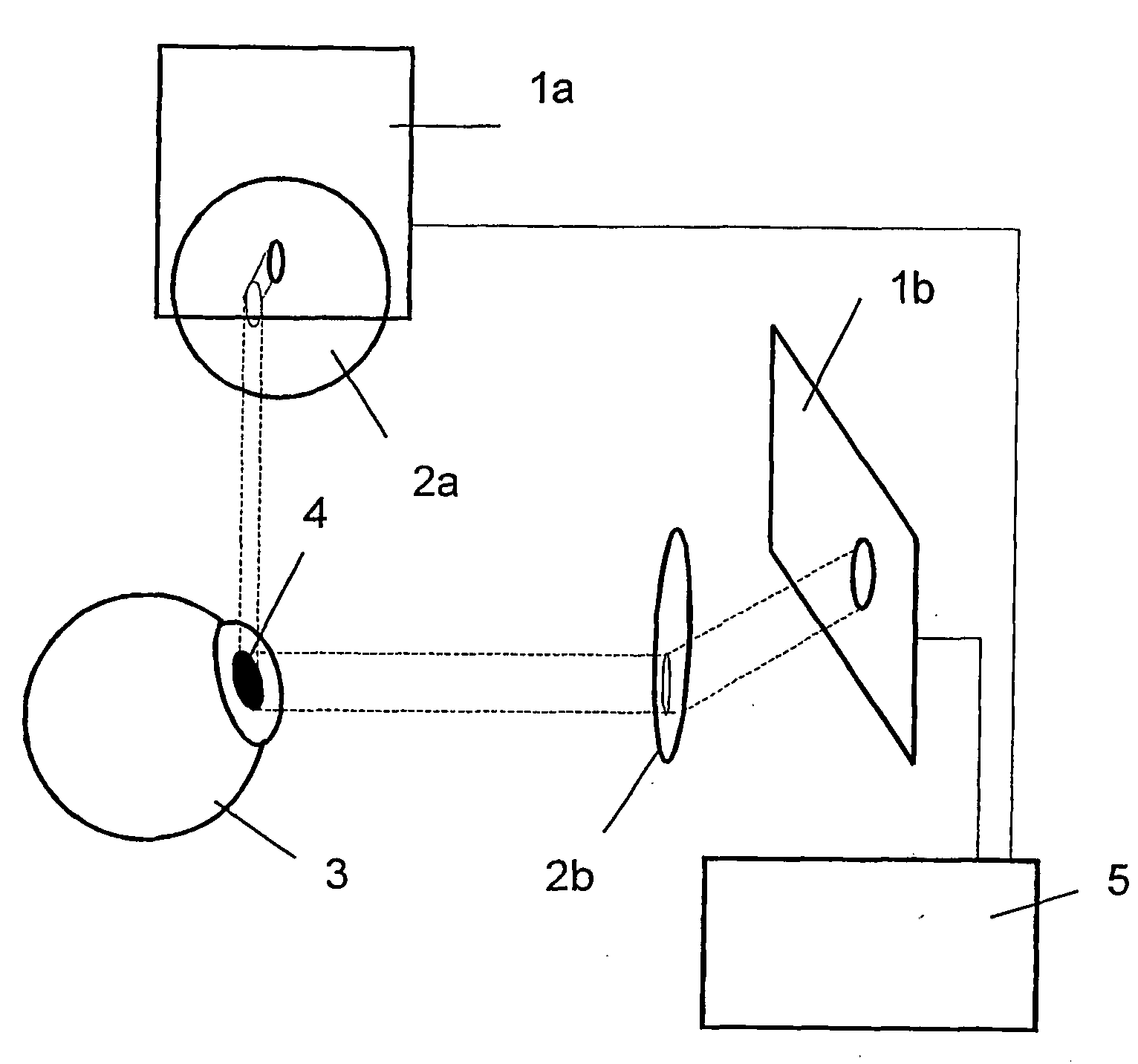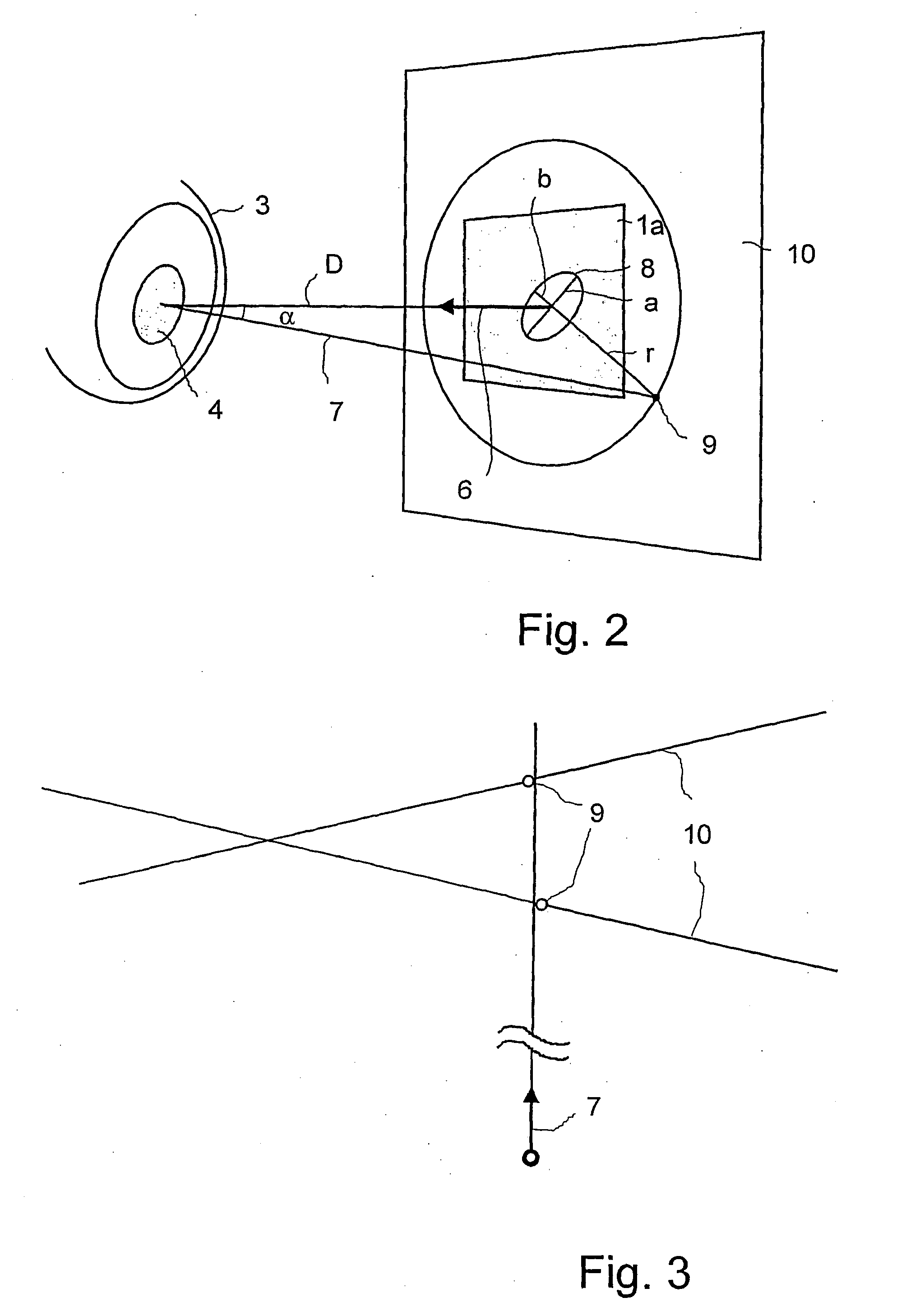Device and Method for the Contactless Determination of the Direction of Viewing
a technology of contactless determination and direction, applied in the field of contactless determination of the direction of viewing, can solve the problems of limiting the visual field, requiring extremely elaborate image processing, and high cost of established devices based on this principl
- Summary
- Abstract
- Description
- Claims
- Application Information
AI Technical Summary
Benefits of technology
Problems solved by technology
Method used
Image
Examples
Embodiment Construction
[0019]Referring to FIG. 1, the device comprises two cameras, each camera having its essential parts, the receiver surfaces 1a and 1b with their imaging optics 2a and 2b arranged in front. The cameras are located within a spatial reference system (coordinate system). The eye 2 is photographed from at least two spatial directions with simultaneous image recordings. The shape of the pupil 4 and the position on the receiver surfaces 1a and 1b are determined from the images and mathematically described. As can also be seen from FIG. 1, the cameras are connected to an image processing system 5. The surface normal 6 of the respective receiver surface 1a or 1b and the gaze direction vector 7, which is defined as the vector of the tangential surface of the pupil 4, enclose an angle α (FIG. 2). The pupil 4, which is round per se, is imaged as an ellipse 8 through this angle α. The ellipse 8 is characterized by its semimajor axis a and its semiminor axis b. The semimajor axis a corresponds exa...
PUM
 Login to View More
Login to View More Abstract
Description
Claims
Application Information
 Login to View More
Login to View More - R&D
- Intellectual Property
- Life Sciences
- Materials
- Tech Scout
- Unparalleled Data Quality
- Higher Quality Content
- 60% Fewer Hallucinations
Browse by: Latest US Patents, China's latest patents, Technical Efficacy Thesaurus, Application Domain, Technology Topic, Popular Technical Reports.
© 2025 PatSnap. All rights reserved.Legal|Privacy policy|Modern Slavery Act Transparency Statement|Sitemap|About US| Contact US: help@patsnap.com



